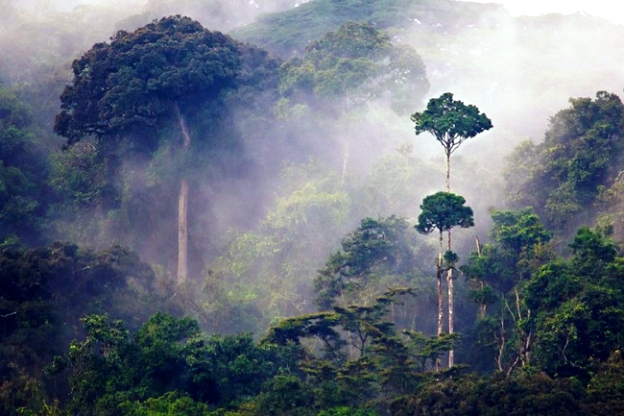In the south western area of Rwanda is the Nyungwe National Park, a mountainous region covered in rain forest and plenty of vegetation and famous for being abundant in a variety of wildlife. An area of just under 378 miles, the park is a large protected area and one of the most beautiful places to visit in Rwanda as well as one of the biggest rain forests situated in mountainous areas.

History
Although people have lived Nyungwe for over 50,000 years, the forest itself is older still and has a very rich culture and history. The local people depend on the rainforest for sustenance, and many of the tourism that comes to the region is thanks to the ever growing tourist interest in the region’s wildlife and natural beauty.
During the horror of the 1994 genocide, Nyungwe National Park still was looked after by some of the younger members of the protection team. While others fled for their own safety, many stayed to protect what was dear to them. Not long after that, the numbers of the endangered species in the region began to deplete such as the elephant, the last of which was killed by poachers in 1999.
Over the 1960s and 70s the park suffered a lot of devastation with poachers, fires and illegal logging taking place, but thanks to its new protected status which the park gained in 2005, the Nyungwe National Park is now a well preserved area treasured by its local people.
Wildlife
Thanks to its protected status and thick vegetation, there is a abundance of wildlife still thriving in Nyungwe today. With a number of mammals, over 300 species of bird and around 13 species of primates, Nyungwe is a great place for tourists to soak up the thriving environment of the park. There are a great many different types of monkey in the park, and searching for the chimpanzees on one of the famous monkey tracking tours is a great way of spending time on your holiday.
Whether you want to come to Nyungwe to experience the wildlife or the views, you are sure to go away with some great memories.
After Nyungwe you Can also be Entertained by Intore dancers
Intore Dancers
A group of traditional performers, the Intore dancers are famous for their moves and their high jumping. Intore dancing, an art form that has been around since before colonial times was originally performed for Tutsi Kings (mwami) and the groups that performed these dances were warriors. The Intore is generally made up of a 3 part performance; women performing a ballet, men performing the warriors’ “Dance of Heroes” and a drumming section.
Movement
The moves that the dancers used stay true to their time honoured traditions, and as the performances were originally performed by warrior dancers, there is an element of graceful aggression in their movements. The dances usually tell a story, and the performance will usually denote a battle or a struggle between two tribes. One of the most ancient dancing in Africa, this type of Rwandan dancing also is famous for the dancers performing very high jumps using a special technique which can raise them sometimes 2 meters into the air!
Music
Vocals and other sounds are a huge part of the Intore dancer’s performance as well. Singing in harmony during slower parts of the music, chanting aggressively when the performance builds to a more aggressive stage and the jangle of the bells wrapped around their ankles all add to the stage presence of these group of men. Drumming that accompanies the piece will generally kick in to fasten the pace of the piece and vocals can be used to either denote struggle or peace.
Costume
Traditional dress is worn when performing the Intore dance, also known as the ‘Dance of Heroes’. The warrior dancers wear bands of bells around their ankles to create a unique sound as they stamp their feet, carry a traditionally carved shield and spear, and wear sisal fibre wigs (sometimes made of grass).
Overall the Intore dance performance is one of the most popular Rwandan traditions still kept alive today, and tourists flock from all over the world to see these traditional dances and experience some of the heart and soul of Rwanda.
